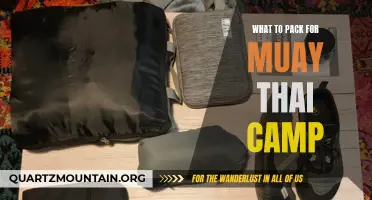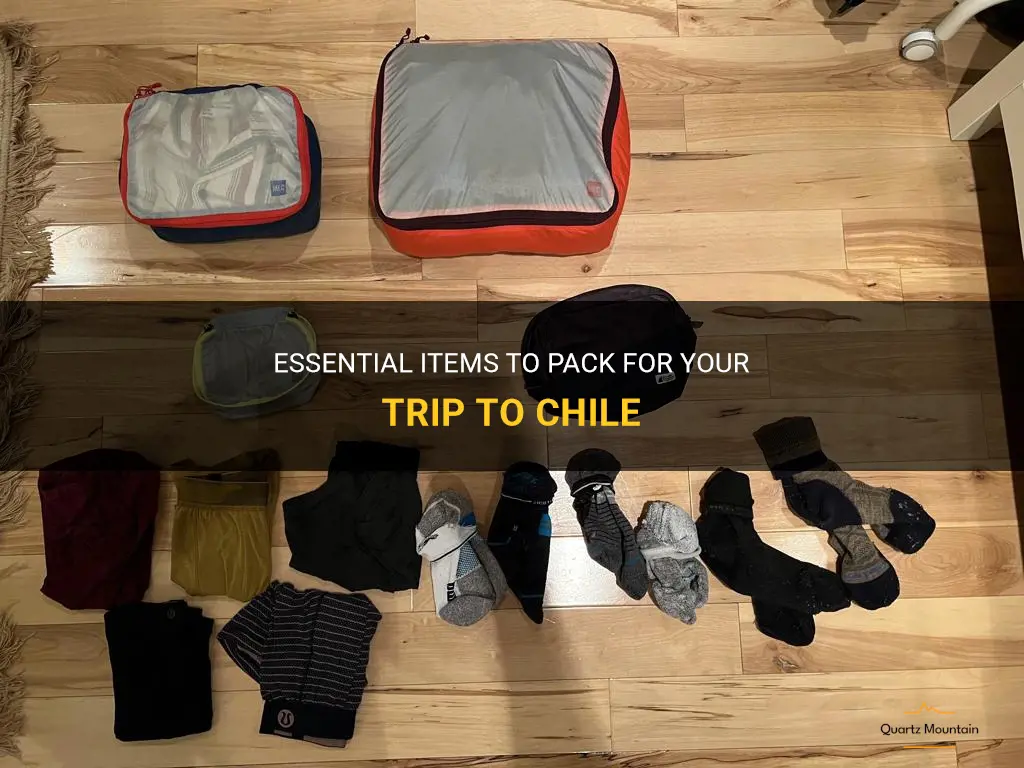
Are you planning a trip to Chile? You're in for an incredible adventure! But before you set off on your journey, it's essential to pack all the necessary items to ensure a comfortable and hassle-free trip. From sturdy hiking boots for exploring the breath-taking landscapes to a trusty travel adaptor for staying connected, this guide will help you pack all the must-have essentials for your trip to Chile. Whether you're visiting the bustling streets of Santiago or embarking on a trek through the stunning Patagonia region, be prepared for an unforgettable experience in the land of poets and magic.
What You'll Learn
- What are some essential items to pack when traveling to Chile?
- Are there any specific clothing items or accessories that are recommended for Chile's varying climates?
- What kind of documents and identification should I bring with me to Chile?
- Are there any specific electronics or adapters that I should pack for use in Chile?
- Are there any specific medical supplies or medications that I should bring when traveling to Chile?

What are some essential items to pack when traveling to Chile?
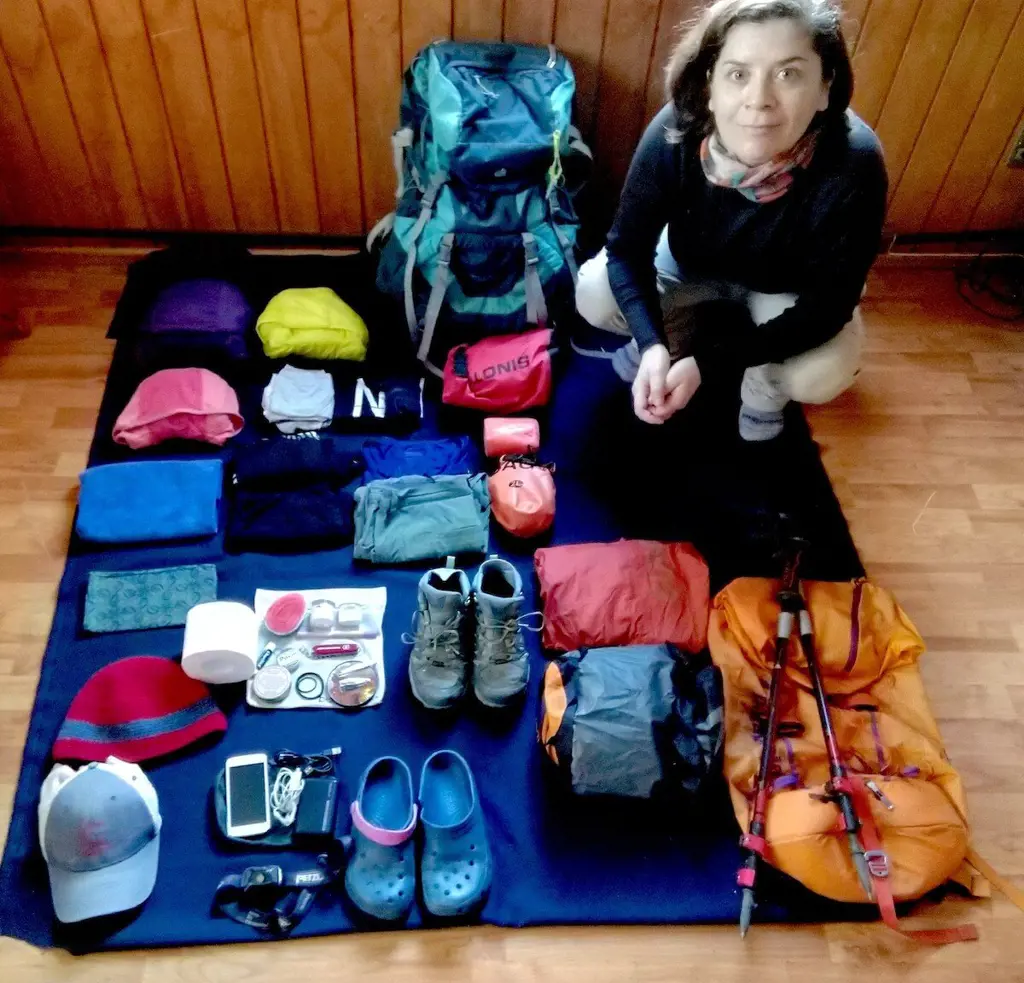
When traveling to Chile, it is important to be prepared and pack essential items to ensure a smooth and enjoyable trip. Whether you are planning to explore the bustling streets of Santiago or embark on an adventure in the stunning landscapes of Patagonia, having the right items will make your trip more comfortable and convenient. Here are some essential items to consider packing when traveling to Chile.
- Clothing: Chile's climate can vary significantly depending on the region and time of year. It is important to pack clothing suitable for different weather conditions. If you are visiting during the summer months (December-February), pack lightweight and breathable clothing like t-shirts, shorts, and dresses. In winter (June-August), pack warm layers including sweaters, jackets, and waterproof outerwear, especially if you plan to visit the southern region where temperatures can drop significantly. Don't forget to pack comfortable shoes for walking, as Chile offers numerous hiking and outdoor activities.
- Travel documents: It is crucial to carry all necessary travel documents with you. This includes your passport, visa (if required), travel insurance, and any other identification documents. Make sure to keep them in a secure place, such as a waterproof document organizer or a money belt. Also, consider making digital copies of all your important documents in case of loss or theft.
- Medications and first aid kit: If you have any prescription medications, be sure to pack an ample supply for the duration of your trip. It is also advisable to carry a small first aid kit that includes essential items such as band-aids, pain relievers, antiseptic ointment, and any other medication you may need for common travel ailments like allergies or motion sickness.
- Money and credit cards: While credit cards are widely accepted in major cities and tourist areas, it is always wise to carry some cash for smaller establishments or places that may not accept cards. Additionally, it is advisable to inform your bank about your travel plans to avoid any issues with international transactions. Keep your money and cards in a secure wallet or money belt to prevent theft.
- Electronic devices and adapters: If you plan to use electronic devices during your trip, make sure to pack the necessary chargers and adapters. Chile uses a two-pronged electrical outlet, so if your devices have a different plug type, you will need an adapter.
- Language guidebook or translator app: While many Chileans in major tourist areas speak English, having a basic understanding of Spanish can be helpful, especially when venturing off the beaten path. Pack a language guidebook or download a translator app on your smartphone to facilitate communication.
- Travel essentials: Other essential items to pack include a travel-sized toiletry kit, sunscreen, insect repellent, a reusable water bottle, a travel towel, and a travel-sized umbrella. These items will help keep you comfortable and prepared for any situation that may arise during your trip.
It is important to note that this list of essential items may vary depending on your personal preferences, the duration of your trip, and the specific activities you plan to engage in. Be sure to do thorough research and consider the specifics of your travel itinerary when packing for your trip to Chile. By being well-prepared, you can make the most of your time in this breathtaking South American country.
Essential Items to Pack for a Memorable Trip to Manu
You may want to see also

Are there any specific clothing items or accessories that are recommended for Chile's varying climates?
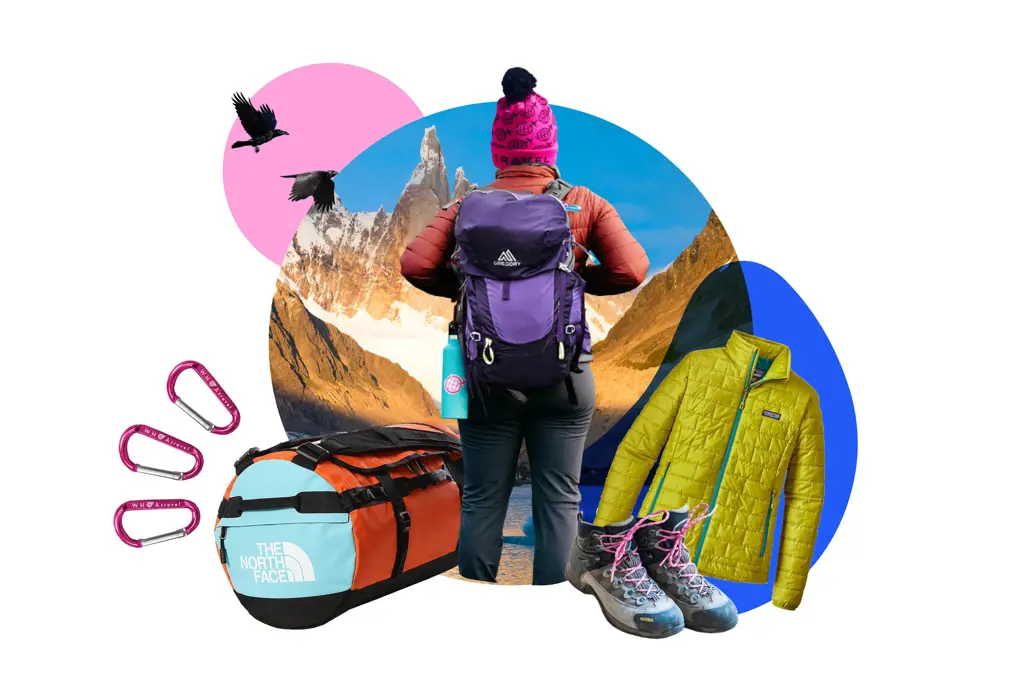
Are you planning a trip to Chile and wondering what clothing items or accessories you should pack? Chile is a country with a diverse range of climates, from the arid desert of the Atacama to the icy glaciers of Patagonia. It is important to pack clothing that will keep you comfortable and protected, no matter where you are in the country.
- Layers are key: One of the most important clothing items to have in Chile is a good set of versatile, layered clothing. This allows you to easily adjust to the changing temperatures throughout the day. Start with a base layer of moisture-wicking fabric, such as merino wool or synthetic materials, to keep you dry and comfortable. Add a mid-layer, such as a fleece or lightweight down jacket, for insulation. Finally, top it off with a waterproof and windproof outer shell to protect you from rainy and windy conditions.
- Warm and waterproof footwear: In Chile, you may find yourself trekking through snowy mountains or exploring wet forests. It is essential to have a pair of warm and waterproof footwear to keep your feet protected and dry. Look for boots that are insulated and have a sturdy tread for better traction on slippery terrain. Don't forget to bring a pair of comfortable walking shoes for urban areas as well.
- Sun protection: In the Atacama Desert, the sun can be extremely intense. It is crucial to protect yourself from harmful UV rays by wearing sunscreen with a high SPF, a wide-brimmed hat, and sunglasses. In regions with high altitudes, such as Patagonia, the sun can also be intense. Be sure to pack sunscreen and protective eyewear no matter where you are in Chile.
- Cold-weather accessories: If you are planning to visit the southern regions of Chile, such as Patagonia, it is important to pack cold-weather accessories. This includes items like a warm hat, gloves, and a scarf or neck gaiter to protect your face from the cold wind. These accessories will help keep you warm and comfortable during hikes or outdoor activities.
- Lightweight and breathable clothing: Chile can experience hot and humid temperatures, especially in coastal areas. It is advisable to pack lightweight and breathable clothing made from moisture-wicking materials, such as cotton or linen. These fabrics will help keep you cool and comfortable in warmer climates.
For example, if you are planning to visit Santiago, the capital city of Chile, you may experience a Mediterranean climate with hot summers and mild winters. In this case, you will need lightweight and breathable clothing for the warmer months and a light sweater or jacket for cooler evenings.
In contrast, if you plan to explore the Chilean Patagonia, which has a cold and windy climate, you will need to pack warm and waterproof clothing. This includes a down jacket, thermal layers, waterproof pants, and insulated boots.
Overall, Chile's varying climates require you to pack a range of clothing items and accessories, from warm and waterproof gear for the colder regions to lightweight and breathable apparel for the hot and humid areas. By following these recommendations and considering the specific climate of the region you are visiting, you can ensure that you are well-prepared and comfortable during your trip to Chile.
The Ultimate Guide to Packing for Your Surf Trip to Indonesia
You may want to see also

What kind of documents and identification should I bring with me to Chile?
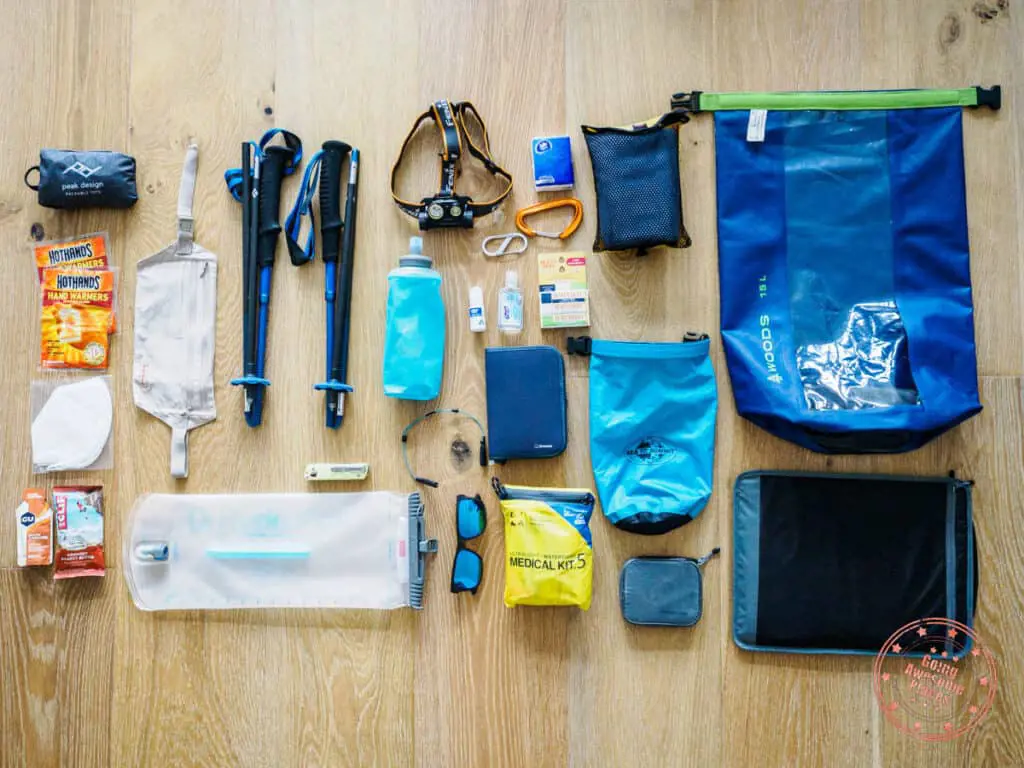
When traveling to Chile, it is important to have the necessary documents and identification to ensure a smooth entry into the country. Here is a list of the required documents and identification that you should bring with you:
- Passport: A valid passport is required for entry into Chile. Make sure your passport is valid for at least six months beyond your planned departure date from Chile.
- Visa: Depending on your nationality, you may or may not require a visa to enter Chile. Citizens of some countries, such as the United States and most European countries, can enter Chile as tourists without a visa for up to 90 days. However, it is best to check with the Chilean consulate or embassy in your country to determine if you need a visa before traveling.
- Tourist Card: Upon arrival in Chile, you will be issued a tourist card, also known as a Tarjeta de Turismo. This card allows you to stay in the country for up to 90 days. You will need to present a valid passport and return ticket to receive the tourist card.
- Return Ticket: It is important to have a return ticket or proof of onward travel when entering Chile. This shows immigration authorities that you have plans to leave the country within the allowed time frame.
- Proof of Accommodation: Immigration authorities may also ask for proof of accommodation during your stay in Chile. This can be in the form of hotel reservations, a letter of invitation from a resident, or a rental agreement if you are staying in a rented property.
- Travel Insurance: While not mandatory, it is highly recommended to have travel insurance that covers medical expenses and emergency repatriation. Chile has excellent medical facilities, but healthcare can be expensive for non-residents.
- International Driving Permit: If you plan on driving in Chile, you will need to obtain an International Driving Permit (IDP). This is a translation of your driver's license and is required by law for foreigners driving in the country.
- Credit Cards and Cash: It is advisable to bring a combination of credit cards and cash for your trip to Chile. Credit cards are widely accepted in larger cities and tourist areas, but you may need cash for smaller towns or rural areas.
It is important to note that the above information is subject to change, so it is always a good idea to check with the appropriate Chilean authorities or your local Chilean embassy or consulate before traveling. Additionally, it is recommended to make copies of all your important documents and keep them in a separate location in case of loss or theft.
Essential Items to Pack in Your Duck Hunting Blind Bag
You may want to see also

Are there any specific electronics or adapters that I should pack for use in Chile?
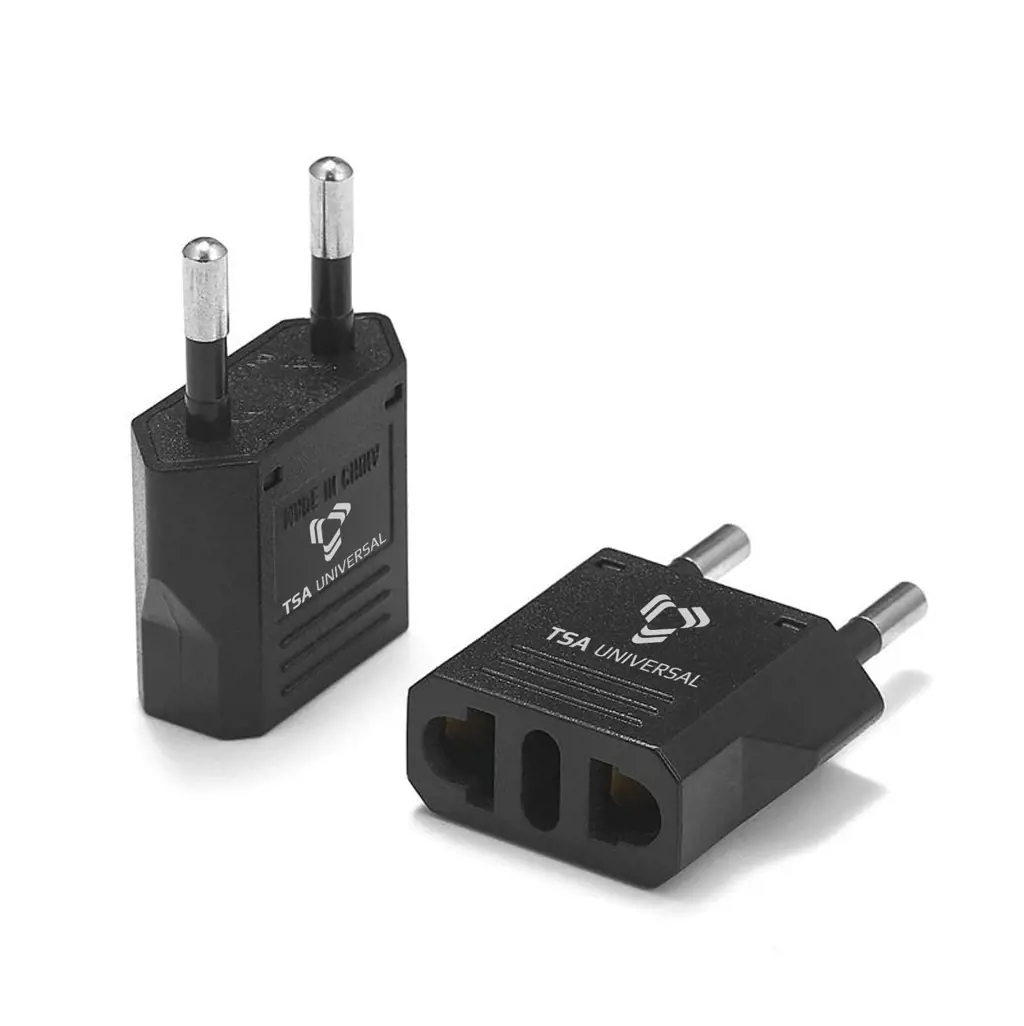
When traveling to Chile, it's important to consider the specific electronics and adapters you may need. Chile uses Type C and Type L electrical outlets, so if you're coming from a country with different types of outlets, you will need to bring an adapter to ensure your devices can be used.
Type C outlets have two round prongs and are similar to the European standard. Type L outlets, on the other hand, have three round prongs in a row and are specific to Italy and Chile. It's worth noting that not all outlets in Chile will have the third grounding prong, so it's essential to have a universal adapter that can accommodate both Type C and Type L outlets.
Here are some specific electronics you may want to consider packing when traveling to Chile:
- Power adapter: As mentioned earlier, a universal power adapter that can accommodate Type C and Type L outlets is a must-have. This adapter will allow you to charge your devices and use them without any issues. It's recommended to purchase a reliable adapter in advance to avoid any last-minute inconveniences.
- Voltage converter: The voltage in Chile is 220-240V, which may be different from the voltage used in your home country. Before plugging in any electronic device, ensure that it can handle the higher voltage or use a voltage converter to safely use your devices.
- Smartphone: Having a smartphone is essential for staying connected, navigating new places, and accessing helpful apps. Make sure your smartphone is unlocked and can support different SIM cards so that you can easily get a local SIM card in Chile for data and calls.
- Camera: Chile is known for its stunning landscapes and natural beauty. If you're a photography enthusiast, bringing a good quality camera will allow you to capture some unforgettable moments. Don't forget to pack extra memory cards and batteries for an extended shooting experience.
- Portable charger: Exploring Chile's diverse terrain may require spending long hours outside without access to a power source. A portable charger can come in handy, ensuring that you can charge your devices on the go and stay connected.
- Laptop or tablet: If you need to work or stay connected during your trip, bringing a laptop or tablet can be beneficial. It's a good idea to have your important files, documents, and travel information stored on these devices for easy access. Just remember to bring the necessary adapters and chargers for these devices as well.
- EReader: If you love reading, consider bringing an eReader. It will help you save space in your luggage as you can carry multiple books in one device. Additionally, with an eReader, you won't have to worry about running out of reading material during long journeys.
Remember to pack all your electronics securely in a well-padded and sturdy travel case to protect them from any damage during transit. It's also crucial to check the specific airline regulations regarding the transportation of electronics to ensure a smooth travel experience.
By planning ahead and packing the right electronics and adapters, you can fully enjoy your trip to Chile without any inconvenience or compatibility issues. Stay connected, capture beautiful memories, and navigate effortlessly with the appropriate electronics for your journey.
The Ultimate Packing Guide for a Day at LEGOLAND
You may want to see also

Are there any specific medical supplies or medications that I should bring when traveling to Chile?
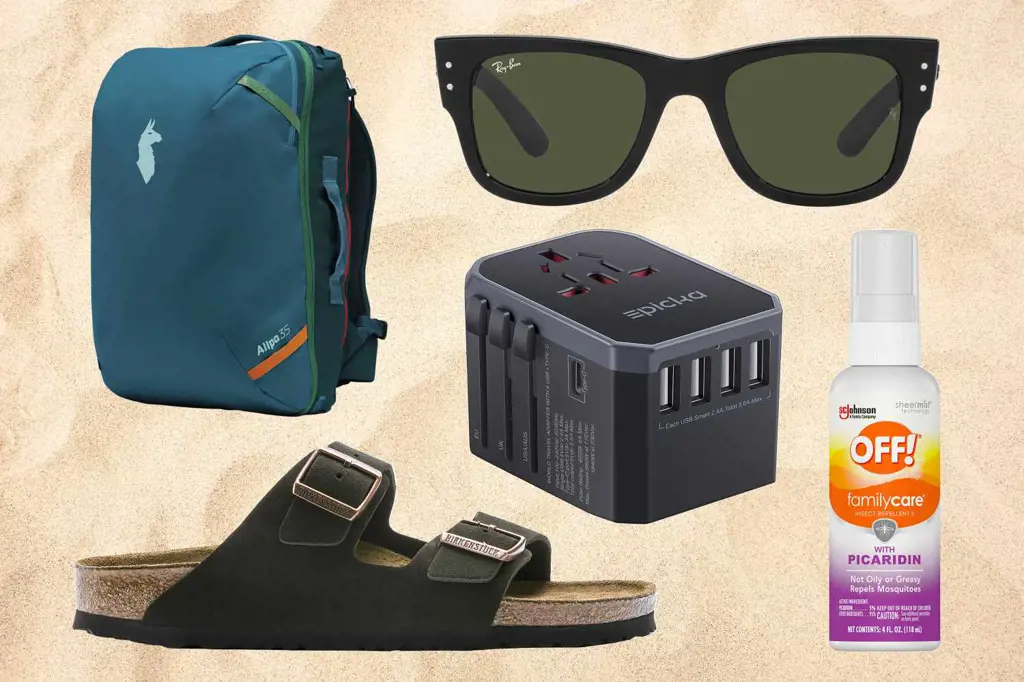
When traveling to Chile, it is important to be prepared with any necessary medical supplies and medications to ensure your health and well-being during your trip. While Chile has a well-developed healthcare system, it can still be beneficial to have certain items on hand, especially if you have specific medical conditions or require regular medication. Here are some recommendations for medical supplies and medications to consider bringing when traveling to Chile.
Prescription Medications:
If you are on any prescription medications, it is crucial to bring an ample supply to last for the duration of your trip. It is also advisable to carry a copy of your prescription or a letter from your doctor explaining your medical condition and the need for the medication. This can be helpful if you need to refill your prescription while in Chile or if you have any issues with customs or security.
Basic Over-the-Counter Medications:
It is a good idea to pack a small supply of common over-the-counter medications for minor ailments such as headaches, allergies, coughs, and colds. Items such as pain relievers (like ibuprofen or acetaminophen), antihistamines, cough syrup, and antacids can come in handy if you experience any discomfort or illness during your trip.
Diarrhea and Dehydration Prevention:
Traveler's diarrhea can be an unfortunate reality when visiting a foreign country. To be prepared, consider bringing over-the-counter medications such as Loperamide (Imodium) to help alleviate symptoms of diarrhea. Additionally, oral rehydration salts or tablets can help prevent dehydration, which may occur in cases of severe diarrhea or illness.
Insect Repellent:
Chile is home to various insect-borne illnesses, such as Zika virus, dengue fever, and chikungunya. To protect yourself from mosquito bites, it is essential to bring a good quality insect repellent containing DEET or another effective ingredient. Applying insect repellent regularly can help reduce the risk of contracting these diseases.
Personal First Aid Kit:
Having a small personal first aid kit can be beneficial, especially if you plan on participating in outdoor activities or visiting remote areas. This kit can include items such as adhesive bandages, antiseptic wipes, gauze pads, adhesive tape, and scissors. It is always better to be prepared for any minor cuts, scrapes, or injuries that may occur during your trip.
Sunscreen and Sun Protection:
Chile has a wide range of climates, from the dry Atacama Desert to the colder regions of Patagonia. Regardless of the location, it is crucial to protect your skin from the sun's harmful rays. Bring a broad-spectrum sunscreen with a high SPF, as well as a wide-brimmed hat, sunglasses, and lightweight, long-sleeved clothing to cover up during peak sun exposure.
Altitude Sickness Prevention:
If your travel plans include visiting high-altitude regions such as the Andes Mountains, it is essential to be aware of the risks associated with altitude sickness. To prevent or alleviate symptoms, it may be helpful to bring medication such as acetazolamide (Diamox) that can aid in adjusting to higher altitudes. However, it is crucial to consult with a healthcare provider before taking any medication for this purpose.
Remember, it is always best to consult with your healthcare provider or a travel medicine specialist before traveling to Chile or any other foreign destination. They can provide you with personalized advice based on your specific medical needs and conditions. By being prepared and having the necessary medical supplies and medications on hand, you can ensure a safe and enjoyable trip to Chile.
Essential Items to Pack for Hiking the Fish River Canyon
You may want to see also
Frequently asked questions
When packing for a trip to Chile, it is important to consider the varied climate and geography of the country. In the summer months (December-February), which is the peak tourist season, pack lightweight and breathable clothing such as shorts, t-shirts, and sundresses. Don't forget to bring a hat, sunglasses, and sunscreen to protect yourself from the strong sun. In the winter months (June-August), especially if you're planning to visit the southern regions or go skiing in the Andes, bring warm layers including a coat, gloves, hat, and thermal underwear. It's also a good idea to pack a waterproof jacket or raincoat as the weather can be unpredictable in some regions.
Chile offers a wide range of outdoor activities such as hiking, skiing, and water sports. For hiking, make sure to pack comfortable and sturdy hiking boots, along with appropriate clothing for the weather conditions and terrain. If you plan on skiing in the Andes, bring your own ski gear or rent it from a local shop. For water sports like kayaking or rafting, pack quick-drying clothes and water shoes. It's also important to bring a good quality sunscreen, a hat, and sunglasses to protect yourself from the intense sun and reflection off the water.
When traveling to Chile, it's important to dress modestly and respectfully, especially when visiting religious sites or conservative rural areas. Avoid packing revealing or skimpy clothing, and opt for more conservative outfits that cover your shoulders and knees. Also, keep in mind that Chileans generally dress quite formally in urban areas, so it's a good idea to pack a few dressier outfits for evenings out or for dining in nicer restaurants. Finally, don't forget to pack a comfortable pair of walking shoes as you'll likely be doing a lot of exploring and walking during your trip.


